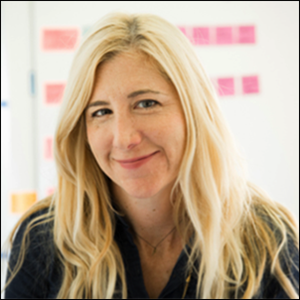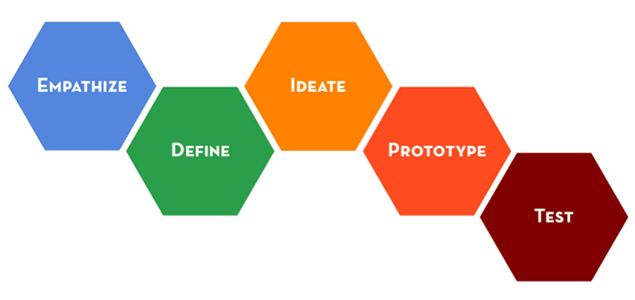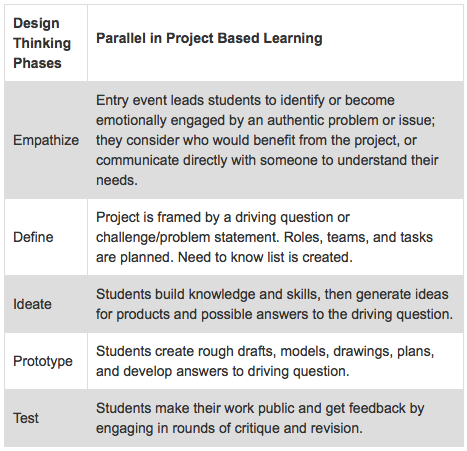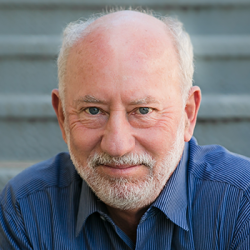 We’re proud to announce our 2018 PBL Champion, who will be honored and deliver a keynote in June at PBL World: Laura McBain of the Stanford d school. Her title is K12 Lab Director of Community and Innovation, and on the d school’s website she explains what drives her work: “What I do: Unleash educators to change the world. Also: Designer of experiences, systems-thinker and social justice advocate.”
We’re proud to announce our 2018 PBL Champion, who will be honored and deliver a keynote in June at PBL World: Laura McBain of the Stanford d school. Her title is K12 Lab Director of Community and Innovation, and on the d school’s website she explains what drives her work: “What I do: Unleash educators to change the world. Also: Designer of experiences, systems-thinker and social justice advocate.”
The K12 Lab Network she leads describes itself as “a catalyst for the national movement to bring design thinking into schools and to help communities think beyond current school models.” They help educators reimagine high school, reinvent professional development, and help school leaders “hack toward deeper learning.” As you can tell, they and we at the Buck are on the same wavelength.
Design thinking has recently joined Project Based Learning as a hot trend in education these days, and has lent a fresh look, real-world connections, and energy to the progressive education movement--and sharpened educators' thinking about how to plan and manage projects. Design thinking exists outside of the field of education, of course; it began as a process used to create or update products and services in the business world. Ideo, the company founded by David Kelley, who also founded the Stanford d school, defines design thinking as “a process for creative problem solving” with a “human-centered approach to innovation.”
Commonalities Between DT & PBL
I’ve seen some confusion in the field about how whether and how design thinking and PBL are connected. Some might see them as distinct, as if you have to do one or the other, but I see them as complementary. The design thinking process adds a tight focus to a project; its clear step-by-step approach helps students manage their work and create high-quality products and solutions. Design thinking works for many kinds of projects, but not in every apsect for some projects (more on that below).
Design thinking has added useful new tools and processes to the broader categories in education under which it and PBL fall: constructivism and inquiry learning. Design thinking focuses on real-world problems or needs. The process begins with understanding the real needs of your customers/audience/users of a product or service. Next steps include defining the task and roles, decisions needed, and challenges expected. Then comes idea generation, prototyping products/solutions, followed by testing to see if they work or need revision.

The similarities with PBL are pretty clear. If you check design thinking against the Framework for High Quality PBL, all six criteria are met. Both build 21st century success skills, feature authentic assessment, and require inquiry over time. Here’s how I’d map the two:

Contrasts Between DT & PBL
Most of the differences have to do with language or emphasis. Design thinking has a cutting-edge, tech-world vibe associated with it, whereas PBL has been around longer and has the feel of something that came from the world of education, not Silicon Valley. Because of its roots, PBL has a more explicit focus on gaining content knowledge and academic skills--not that design thinking-style projects can't also have academic learning goals.
Some types of projects may not obviously lend themselves to design thinking, but could certainly borrow ideas from it. For example, imagine a project that culminates in a debate about a controversial issue. Students are not exactly creating a product for a particular user that would be prototyped and tested, but they would still go through a process of generating ideas, practicing, and getting feedback on their ideas and performance. Or consider a project in which students create a book of poetry, or host a poetry slam event, to express their answer to a driving question such as “How do people show resilience in the face of challenges?” The point is not to meet the needs of someone else, but the process of creating the book or event can still include many of the phases of design thinking.
I encourage you to check out the K12 Lab Network’s website, which is well-designed (as you might imagine) and full of useful resources, including:
- Shadow a Student Challenge (which is all about building a sense of empathy for what students in traditional education go through every day)
- Deeper Learning Puzzle Bus (which has to do with the “escape room” craze)
- Design the Future, a “week long, fully immersive design thinking summer program for rising 9th 10th, 11th and 12th graders in which students work to design solutions to real problems faced by individuals with physical disabilities.”
We’ll be presenting Laura with the PBL Champion award on Thursday, June 21 at PBL World in Napa, CA. Hope you can join us there, but if not I’ll be blogging about what I’m sure will be an exciting keynote!

